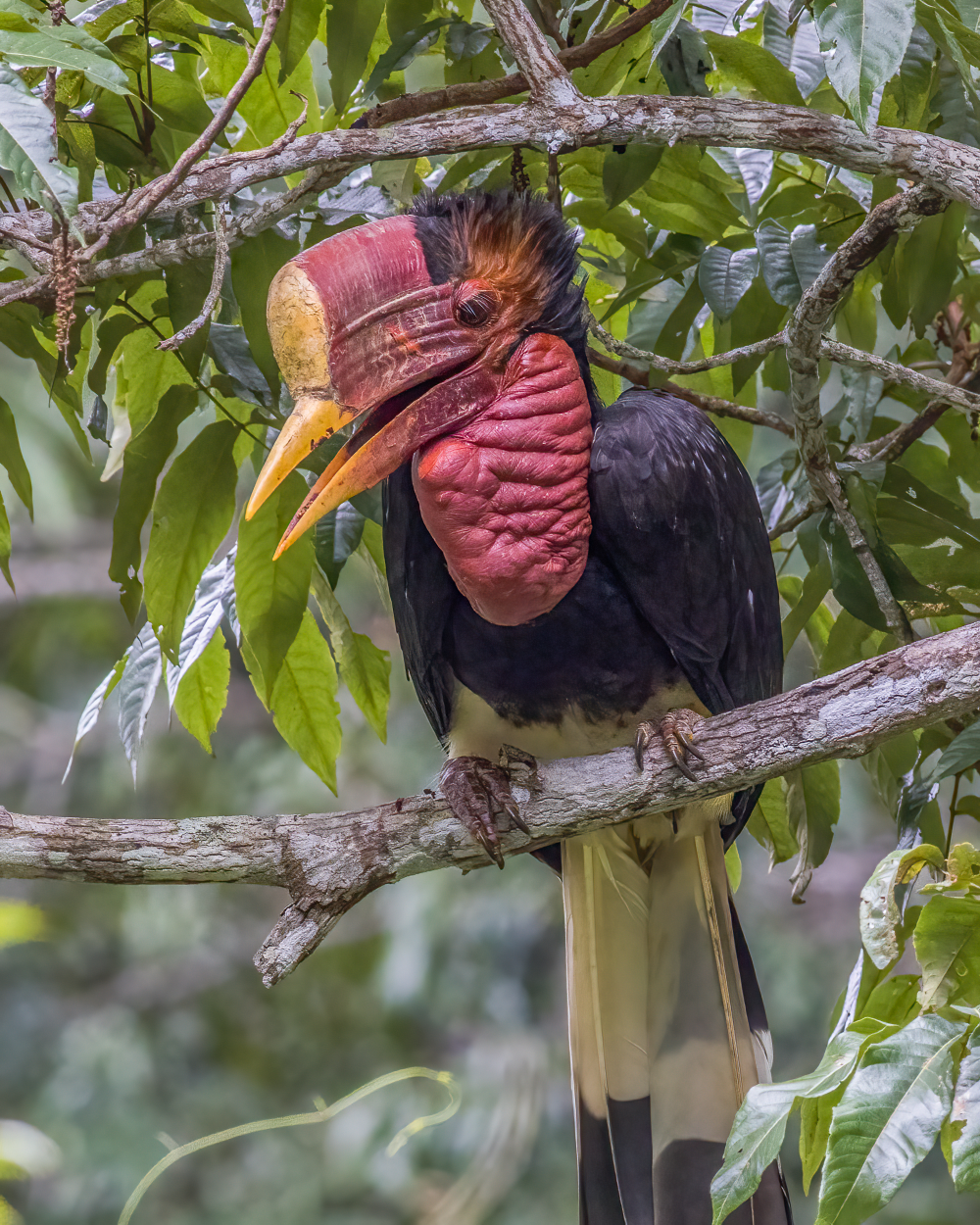When helmeted hornbills go to battle, they wield their giant heads as weapons in an airborne jousting competition. Diagrams reveal the calamitous outcomes that send one contender spiraling toward the ground as the victor rises, but how do they smash into each other without falling unconscious? That’s just what scientists have been trying to find out.
As their common name would suggest, these birds are famous for their impressive headgear, armed with an enormous bulbous casque that’s both ornamental and protective. Known to science as Rhinoplax vigil, the helmeted hornbill is a curious species from an academic perspective as its giant helmet could explain how they’re able to bonk heads in midair without it ending in disaster for both parties.
“As I learned more about this species, I discovered a cross-section of a dried skull in a museum, revealing a shocking trainwreck of trabeculae [inter-connected bony struts] in the casque,” said Dr Mason Dean, an Associate Professor of Comparative Anatomy at the University of Hong Kong (HKU), in a statement. “When I heard that individuals are known to ram their casques together in mid-air displays, I just had to know more about the functional morphology.”
The team used micro-CT to peer inside the casque and uncover the secrets of the hornbills’ helmets. Their samples encompassed male and female specimens, including ones with joint flexibility and a rhamphotheca (the keratin sheath that covers the casque) that can slide off, so they could get a really good look at a wide range of helmets.
Just look at that thing.
Image credit: ZakiFF / Shutterstock.com
The results revealed that “trainwreck of trabeculae” were on average as thick as those found inside an elephant’s femur. If this seems excessive, you’re not wrong, as typically animal size corresponds to trabeculae thickness, so the helmeted hornbill has really taken this trait and run with it – even Dean’s socks were knocked clean off.
“I’ve used micro-CT to look at a big diversity of animal skeletons, but I have never seen bony trabeculae like the ones we’ve found in the hornbill. That massive stand of trabeculae then channels back to the braincase, like a bundle of banyan tree prop roots, converging on a bony platform that’s far more reinforced than in other hornbills and relatives we’ve looked at,” he said.
“Males butt heads in ‘aerial jousting’ at the speed of automobile collisions.”
Image credit: Thipwan/Shutterstock.com
“All of these anatomical features start to give a sense of how the skull of the helmeted hornbill is adapted to withstand one of the fastest known biological impacts, where males butt heads in ‘aerial jousting’ at the speed of automobile collisions.”
This knowledge also has practical applications. “Understanding hornbill anatomy and how it allows for this jousting behaviour can give us clues about this elusive animal’s ecology and fundamental aspects of its life history and health,” said Dean. “Since hornbill functional anatomy is virtually unexplored, our findings will ideally also give new perspectives on the bio-inspired design of high-performing composites for tolerating damage from repeated collisions.”
While the helmeted hornbill’s casque is its greatest weapon, it’s also its greatest weakness. These animals are the subject of industrial-scale poaching that has been spurred on by a surge in demand for “avian ivory” coveted by some humans, so the race is on to protect the species before they get wiped out despite being as strong – in some respects – as elephants (which, by the way, are less athletic than flying hippos).
Awareness is one step in the right direction to protecting a lesser-known and remarkable species, so we can all do our bit by shouting about the incredible talents of the helmeted hornbill’s midair jousting, and that truly remarkable casque.
This study is being presented at the Society for Experimental Biology Annual Conference in Prague on July 2-5 2024.
Source Link: How Hornbills Joust In Midair At Car-Collision Speeds Without Getting Knocked Out
